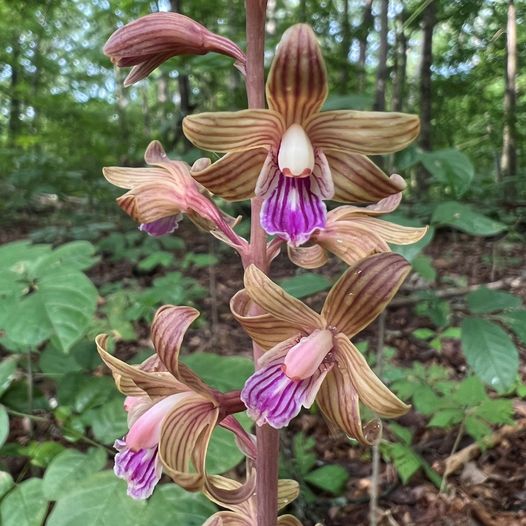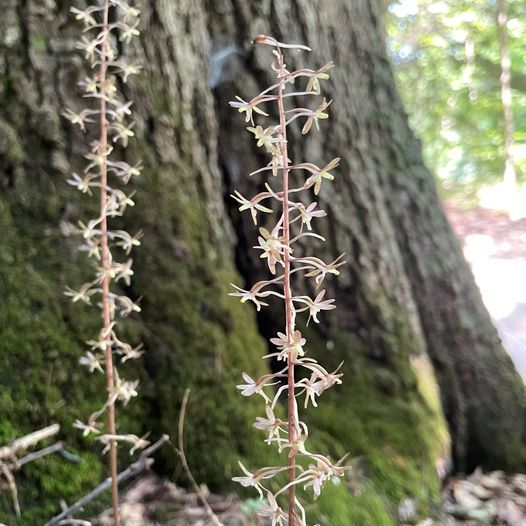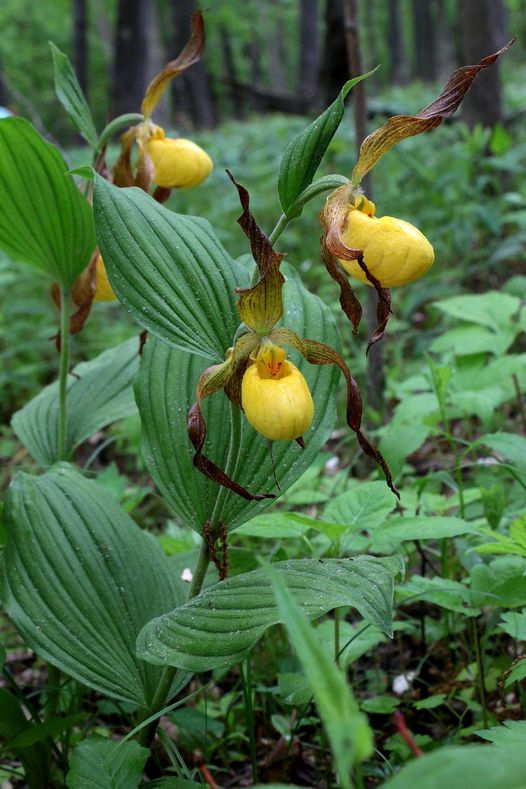Thursday, May 5, 2022 post by Indiana University Press on Facebook:
WILDFLOWERS OF THE INDIANA DUNES NATIONAL PARK is an accessible field guide that bypasses the dry nature of many wildflower guides. In addition to the usual scientific species names, descriptions, and bloom periods, Nathanael Pilla and Scott Namestnik offer deeper narratives—folklore surrounding the flowers, look-alikes, animals associated with the plants—that will be remembered much more easily than the length of a petal.
Available now!
Wildflowers of the Indiana Dunes National Park
****************
The cover photo shows wild lupine and pink lady slipper orchids with special habitat requirements not known if ever found growing in Allen County.
Wild Lupine, but no orchids, are on the Fort Wayne Plant List posted by City of Fort Wayne. There is an interesting discussion January 18, 2024 about planting the wrong
species of native lupines and the federally endangered Karner Blue Butterfly whose only larval host is Sundial Lupine a subspecies Lupinus perennis subsp. perennis on the Indiana Native Plant Society (INPS) group Facebook page.
******************
Tuesday, May 7, 2024 post by Blue Heron Ministries, A Land Trust on Facebook:
The lupine are dressing up the landscape at Badger Barrens a little earlier than normal! We anticipate the peak to be towards the end of this week. Hopefully, the weather will provide you with a opportunity to come hike the trail and soak it in.
Small plot of Steuben County comes alive with color this spring The News Sun
Badger Barrens, a 13-acre nature preserve in Steuben County is covered in a coat of blue, white, and purple lupines. The foot-tall plants are native to Steuben, LaGrange, and Elkhart counties and established with collected seeds in 2008. Lupines were still plentiful in the sandy soils in the 1930s and 1940s. Blue Heron Ministries is a Steuben County based environmental ministry of the Presbyterian Chapel of the Lake Church. Its ongoing mission is “to preserve creation and restore the land to its natural, native ecology through good and focused environmental stewardship.” www.blueheronministries.org .
Thursday, May 9, 2024 post by the Ohio Division of Natural Areas and Preserves on Facebook:
National Wildflower Week- Thursday Throwback
We're celebrating National Wildflower Week by sharing the most popular post from April is Ohio Native Plant Month! The winner was our April 16 post on one of Ohio’s prettiest native orchids—pink lady’s slipper (Cypripedium acaule). Also called moccasin flower, this orchid is easily identified by its bubblegum pink inflated pouch or “slipper" along with its two hairy, strongly veined basal leaves. One of the most exciting (and rare) sights is finding a white flower growing among all the pink ones!
One of five different Cypripediums native to Ohio, pink lady’s slipper is our most common. It occurs throughout south and east Ohio in dry upland forests of pines and/or oaks. It loves acidic, sandy, well-drained soils and can form large colonies of hundreds of plants! Although not rare, it’s not commonly found either, so it’s a real treat to find pink lady's slipper blooming.
*********************
Pink Lady's Slipper grows in acidic soils, whether they be in bogs or in dry conifer and oak woodlands
. Copied from Indiana's Lady's Slippers on the Get Your Botany On! blog July 23, 2011.
The same images were posted on Tuesday, April 16, 2024 by the Ohio Division of Natural Areas and Preserves on Facebook with slightly different information:
Did you know today is National  Orchid Day?
Orchid Day?
Today we're celebrateing April is Ohio Native Plant Month and National Orchid Day! May we present one of Ohio’s prettiest native orchids—pink lady’s slipper (Cypripedium acaule). Also called moccasin flower, this orchid is easily identified by its bubblegum pink inflated pouch or “slipper" along with its two hairy, strongly veined basal leaves.
One of the most exciting (and rare) sights is finding a white flower growing among all the pink ones! One of five different Cypripediums native to Ohio, pink lady’s slipper is our most common. It occurs throughout south and east Ohio in dry upland forests of pines and/or oaks. It loves acidic, sandy, well-drained soils and can form large colonies of hundreds of plants! Although not rare, it’s not commonly found either, so it’s a real treat to find pink lady's slipper blooming.
Bumblebees are its primary pollinator. The sweet aroma of the slipper and its bright blooms draw  inside the slipper. Upon entering, the
inside the slipper. Upon entering, the  find themselves trapped without reward; the only way out is a narrow opening at the top that takes them past the pollen mass. As they squeeze through,
find themselves trapped without reward; the only way out is a narrow opening at the top that takes them past the pollen mass. As they squeeze through,  will deposit pollen on the stigma for pollination! Look closely and you may see slippers with holes which are left behind by bumblebees that chewed their way out!
will deposit pollen on the stigma for pollination! Look closely and you may see slippers with holes which are left behind by bumblebees that chewed their way out!
#OhioWildflowers #NationalOrchidDay #ohiotheheartofitall




